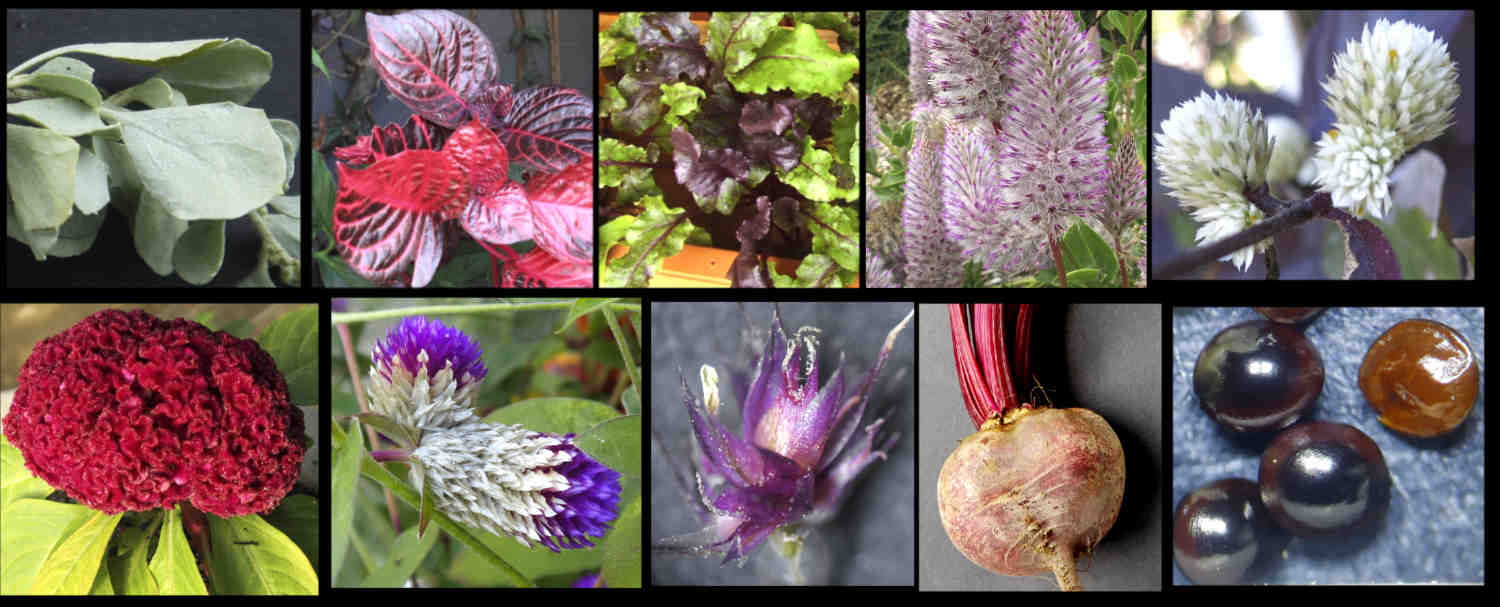Amaranthaceae.
It is sometimes still seen as family Chenopodiaceae which is now generally included as a subfamily in a broader Amaranthaceae.
Plants of the World Online (Kew) has 95 genera while others have a broad classification with 165 to 180 genera and around 2000 to 2500 species.
Most of the plants are annual to perennial herbs or sub-shrubs with only a few larger shrubs, vines and trees.
The simple leaves are mostly alternate in a spiral, occasionally opposite and on stems that are often thickened at the nodes.
Blade shape is variable and the edges may be smooth or toothed.
Terminal and axillary inflorescences may be a single flower but most are variously arranged branched or unbranched clusters that are often dense.
The always small flowers each have a bract and 2 bracteoles that may be dry and bristly or white, green or coloured.
They are usually prominent and persist on the fruit.
There are no petals but 3 to 5 (0 to 2 or 6 to 8) tepals.
Sometimes referred to as sepals they are usually free but may be basally fused.
They are often dry and scale-like but may resemble petals.
Most species have bisexual flowers but a few are unisexual with male and female on the same or different plants.
Typically there are 5 stamens that insert opposite the sepals but some species insert between them.
The filaments are usually fused at the base and sometimes form a tube that may have lobes or teeth on the top.
Anthers have 2 or 4 pollen sacs that open inwards through longitudinal slits.
Stamens may be of different sizes and there may be infertile staminodes.
There is often an annular nectary disk inside the stamens.
The superior ovary, of 1 to 3 (5) fused carpels has 1 locule with 1 basally attached ovule.
The 1 to 3 styles have a variously shaped stigma.
The fruit is usually a capsule that can open in various ways.
The tepals and occasionally the bracts and bracteoles persist around the fruit.
Berries, drupes or nutlets are occasionally seen.
The single seed is often a shiny black.
There are 8 or 10 subfamilies including:
Amaranthoideae (Amaranthus, Celosia, Herbstia and Ptilotus),
Gomphrenoideae (Alternanthera, Gomphrena and Iresine),
Betoideae (Beta – beets) and the salt tolerant Chenopodioideae.
J.F.


